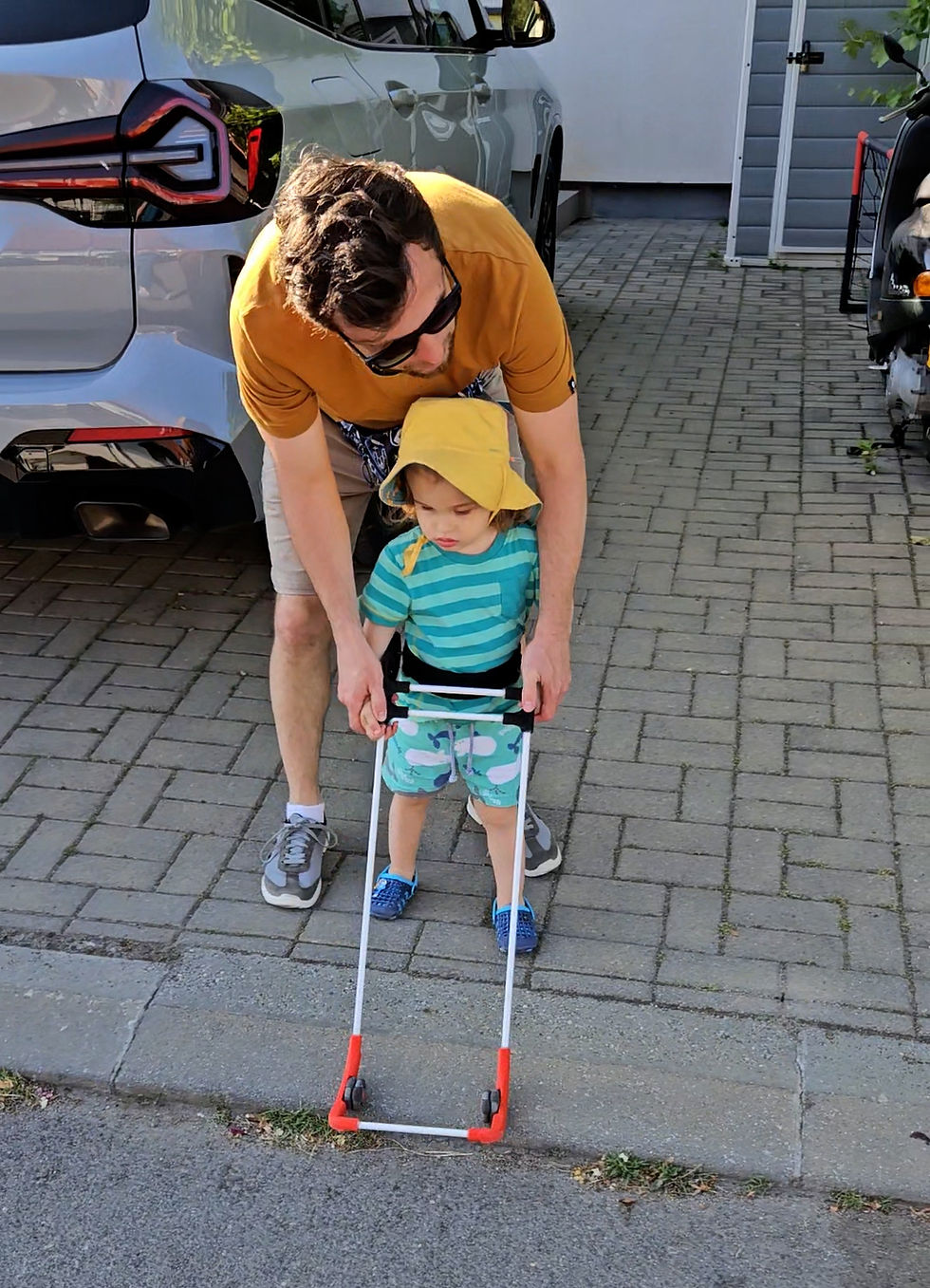Measure Walking in Miles Not Milestones
- Grace Ambrose-Zaken

- Mar 13, 2024
- 2 min read
Updated: Jun 16, 2024

Infants, toddlers, and preschoolers have very different walking abilities. The infant cannot walk. The toddler unsafely and unsteadily walks 3 to 6 hours a day meeting incremental milestones. The preschooler safely walks independently 6 to 8 hours a day in most environments (Adolph, et al., 2012).
Parents and professionals express difficulty providing their children with mobility visual impairment or blindness (MVI/B) under the age of six with a safe and effective way to participate independently in their 6 to 8 hours of recommended daily physical activity. Parents find the challenges of helping their toddlers with MVI/B to use long canes correctly and consistently prevents them from participating safely in most activities (Ambrose-Zaken, 2023, 2022).
The Pediatric Belt Cane is a 2-step safety buffer. It has a singular and very important job - to detect obstacles in the path ahead. The rest is up to you.
If you want to teach your toddler with MVI/B to achieve preschool-level independence just remember that, like in the dictionary, mobility comes before orientation. First, make your child feel safe moving, then teach them to go places. When children are safely moving independently, they learn more freely, easily, and happily.
Toddlers safe mobility is in the hands of their adults. Safe Toddles provides parents with a white cane solution for keeping their children with MVI/B safe.
Contact us at info@safetoddles.org for more information 845-244-6600.
References
Adolph, K. E., Cole, W. G., Komati, M., Garciaguirre, J. S., Badaly, D., Lingeman,
J. M., ... & Sotsky, R. B. (2012). How do you learn to walk? Thousands of
steps and dozens of falls per day. Psychological science, 23(11), 1387-1394.
Ambrose-Zaken, G., (2023) Beyond Hand’s Reach: Haptic Feedback is Essential
to Toddlers with Visual Impairment Achieving Independent Walking. The
Journal of Visual Impairment & Blindness, 117(4), 278-
Ambrose-Zaken. (2022). A Study of Improving Independent Walking Outcomes
in Children Who Are Blind or Have Low Vision Aged 5 Years and Younger.
Journal of Visual Impairment & Blindness, 116(4), 533–545.








Comments